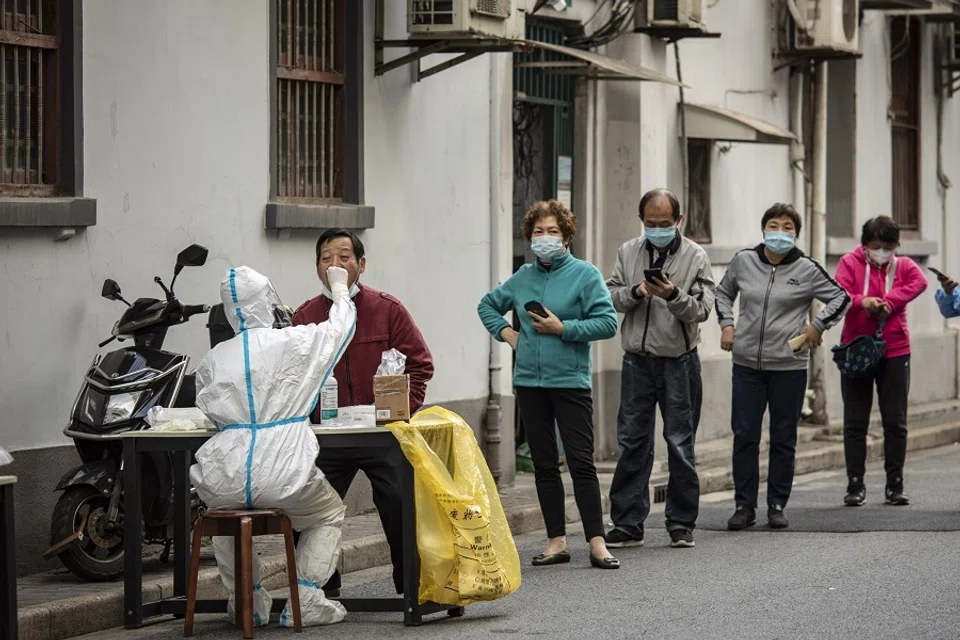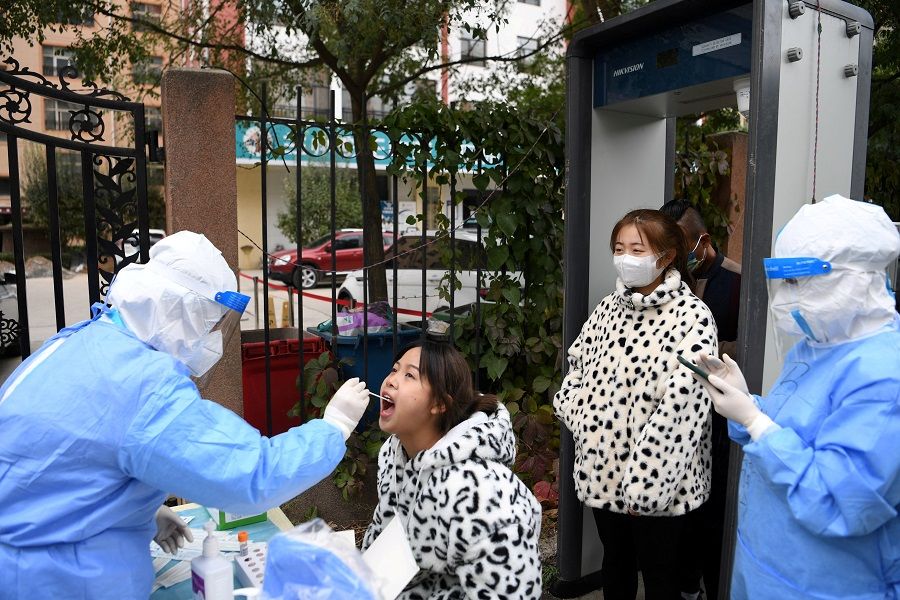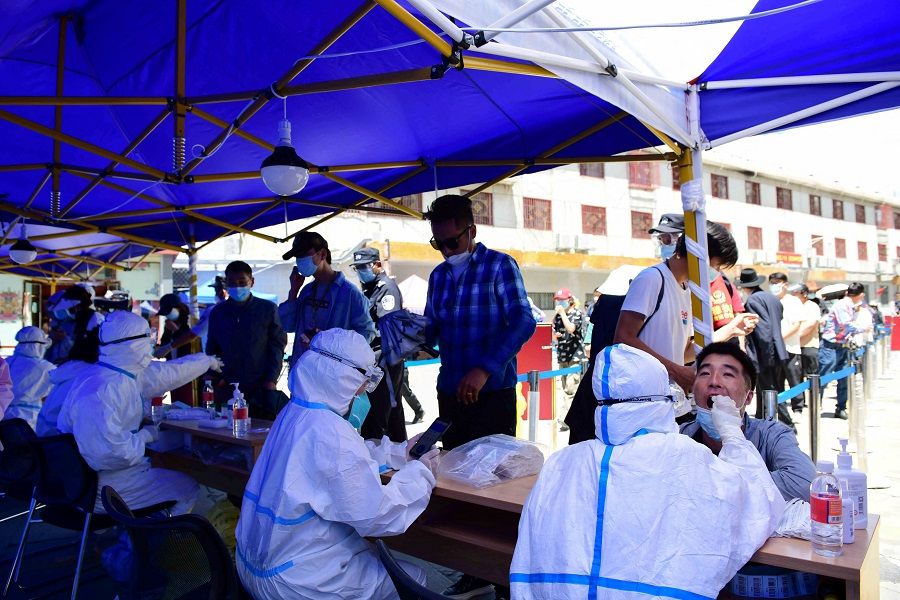Can China connect to the outside world amid zero-Covid?

Over the past month, China's anti-Covid policy has once again become the hot topic among my friends in and outside of China.
Mixed signals in easing restrictions
Friends outside of China send news of international flights increasing and anticipate that entry restrictions will soon be eased, while those within China lament about the never-ending anti-epidemic measures, citing places like Henan's Zhengzhou and Gansu's Lanzhou which are still going through chaotic Covid-19 outbreaks.
Clearly, the two groups of people have received contradictory messages about China's Covid-19 policy, a situation that has become more evident after the Chinese Communist Party (CCP)'s 20th Party Congress.
Externally, China has repeatedly signalled that it would speed up its reopening process. On 25 October, the National Development and Reform Commission and other departments rolled out 15 measures to boost foreign investment, including streamlining travel procedures for foreigners coming to China. The Civil Aviation Administration also announced on 30 October that inbound and outbound flights are expected to increase by 105.9% year-on-year.

There is also recent talk about the Chinese authorities setting up a committee to assess the possibilities of exiting zero-Covid, with the goal of reopening in March next year.
Internally, China has maintained stringent anti-Covid measures in areas such as Zhengzhou, Lanzhou and Lhasa. Over the past week, news of a Covid-19 outbreak in Foxconn's Zhengzhou plant and a massive worker exodus again highlighted the pandemic's impact on China's supply chain and the people's plight amid harsh anti-epidemic measures. News of the death of a three-year-old boy in Lanzhou possibly caused by a delay in treatment due to Covid-19 restrictions also triggered a huge backlash. In late October, a rare demonstration was staged in Lhasa, which has been in lockdown for nearly three months.
Costs of prolonged restrictions
How do we make sense of these seemingly contradictory signals?
Amid massive downward pressure on the Chinese economy, the Chinese government is striving to restore investor confidence and prove to the outside world through its policies that it is on the path of reopening.
How can China bridge the gap between its travel restrictions and Covid-19 policy, to effectively connect with the outside world without giving up on zero-Covid?
However, the speed and extent to which entry restrictions will be eased under China's dynamic zero-Covid policy remains in question. A friend working at a foreign enterprise raised a salient point: it is not a question of whether China will reopen, but rather what kind of Covid-19 restrictions will travellers face when they enter China, and would they still want to visit given those restrictions?
He asked, "Can you imagine a foreign enterprise executive spending several days in quarantine? Even if they are willing to undergo quarantine, it would be difficult for them to visit different cities. Yet for them, time is money." Foreign enterprises are most concerned about whether their executives can freely enter and exit China to get a first-hand feel of China's situation.

And this brings up a bigger issue: how can China bridge the gap between its travel restrictions and Covid-19 policy, to effectively connect with the outside world without giving up on zero-Covid?
The Covid-19 policies have been adjusted in several Chinese regions since November. Jiemian News recently reported that a negative nucleic acid test is only required for people exiting train stations and is no longer needed for passengers entering the stations in Guangxi's Guilin, Liuzhou, Hezhou, Wuzhou, Guigang and Laibin, as well as Guangdong's Zhanjiang. Also, passengers will no longer need to provide a negative nucleic acid test result to enter Anhui's Hefei Xinqiao International Airport, but may still be required upon arrival at the destination.
Several regions in Guizhou, Sichuan, Gansu, Hunan and other provinces also announced that nucleic acid tests will no longer be conducted free for the public. Some people believe that this is the first step in the relaxation of local anti-epidemic measures, while others think that it is purely the local government's way to shun the massive cost of normalised nucleic acid testing.
Bridging the gap between easing and control
There is possibly some truth in both views: several regions have had to relax anti-epidemic measures as the local governments are unable to provide normalised nucleic acid testing for free.
China's National Health Commission on 2 November reiterated the country's consistent stance to "unwaveringly stick to the general guideline of preventing inbound Covid-19 cases and domestic resurgence, as well as its dynamic zero-Covid policy, and strive to stem sudden Covid-19 outbreaks in the shortest time with the lowest costs". This implies that China's dynamic zero-Covid policy will not be fundamentally changed in the short term.

When the CCP's Politburo Standing Committee met on 5 May and pledged to "unswervingly adhere" to the country's dynamic zero-Covid policy, it also asserted that it would "combat any rhetoric and actions that distort, doubt, or deny our country's anti-epidemic policies". Party committees and governments at all levels were also urged to maintain their "fighting spirit" and "build up firm shields against the epidemic". These tough expressions, however, did not resurface during the health commission's November meeting, which provided some room for policy adjustment.
In general, China's internal and external Covid-19 policies have seen some adjustments, albeit at a different pace.
However, local officials continue to bear the brunt of the zero-Covid failures, with at least 15 cadres from Xinjiang and Inner Mongolia sacked or punished in October alone. At present, the effective implementation of the strict dynamic zero-Covid policy is still an important performance indicator for local officials.
In general, China's internal and external Covid-19 policies have seen some adjustments, albeit at a different pace. As long as local officials are still under political pressure to adhere to the dynamic zero-Covid policy, they would rather impose harsher Covid-19 measures rather than ease them. Indeed, this would make it difficult for China to make subsequent adjustments to its Covid-19 policy, and bridge the gap between its entry restrictions and overall Covid-19 policy.
This article was first published in Lianhe Zaobao as "中国防疫政策双声道".
Related: No end to China's zero-Covid in the short term | Chinese workers fleeing Foxconn highlights China's zero-Covid dilemma | CCP new leadership team's big task: Build market confidence amid zero-Covid | Where will the zero-Covid policy and Xi's third term lead China? | Beijing faces a huge deficit of trust after 20th Party Congress
